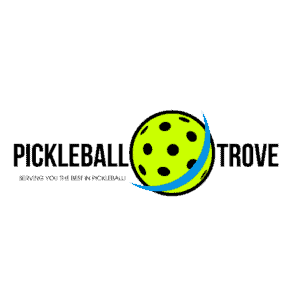Mastering the Art of the Serve in Pickleball: A Comprehensive Guide
Pickleball is a sport that blends elements of tennis, badminton, and ping-pong into a unique, fast-paced game that’s enjoyable for all ages and skill levels. A fundamental aspect of pickleball, just like its racket sport cousins, is the serve. The serve sets the tone for the rally and can be a strategic weapon in your pickleball arsenal. In this comprehensive guide, we’ll cover everything you need to know about serving in pickleball – from the basic rules to advanced techniques and strategies.
Understanding the Rules of Serving in Pickleball
Before we delve into the technicalities and strategies of serving, it’s important to grasp the basic rules set by the USA Pickleball Association (USAPA). The serving rules in pickleball are quite unique compared to other racket sports, and adherence to them is crucial.
Serving Sequence and Scoring
In pickleball, only the serving team can score points. The game starts with the player in the right-side court (even court) serving. If the serving team wins the rally, they score a point, and the server moves to the left-side court (odd court) to serve again. This side-switching continues as long as the serving team keeps winning points.
When the serving team commits a fault, a serve is lost. In doubles, the partner then serves from their current side of the court. When they lose a point, the serve passes to the opposing team, and the sequence starts again. The first team to score 11 points, leading by at least 2 points, wins the game.
Serve Restrictions
When serving in pickleball, you must adhere to certain restrictions:
- Underhand Serve: The serve must be an underhand hit. This means the paddle contact with the ball must be below the server’s waist, and the paddle head must be below the wrist.
- Two Bounces Rule: The ball must bounce once in the receiver’s court before it is returned, and again on the server’s side before continuing play. This is known as the two-bounce or double-bounce rule.
- Non-Volley Zone: The serve must clear the non-volley zone, or the “kitchen,” meaning it must land beyond the seven-foot area on the receiver’s side.
- Diagonal Serve: The server must serve diagonally, aiming for the service court opposite to them.
Having a clear understanding of these rules sets a solid foundation for you to develop your serving skills. Now, let’s move on to the technical aspects.
The Anatomy of a Good Pickleball Serve
1. Grip
Your serve begins with how you grip your paddle. The commonly recommended grip for serving is the ‘Eastern’ or ‘Shake Hands’ grip. Imagine extending your hand as if you’re about to shake someone’s hand, then grip the paddle naturally. The base knuckle of your index finger should align with the paddle’s third edge (for right-handed players).
2. Stance and Body Position
Stand behind the baseline, facing the net, with your feet shoulder-width apart. Your weight should be on your back foot. As you begin your serve, you’ll transfer the weight to your front foot.
3. The Swing
Remember, the serve in pickleball is an underhand stroke. Start by letting the ball drop from your non-dominant hand. As it falls, swing your paddle arm forward, making contact with the ball below your waist level. Your paddle head should remain below your wrist at the point of contact. Striking the ball in an upward motion will help it clear the net and land in the appropriate service court.
4. The Follow-Through
After contact, your paddle should follow through naturally, typically up to the height of your shoulders. Your body momentum should move you slightly forward. Remember to stay behind the baseline until the ball has left your paddle.
Advancing Your Pickleball Serve
While a well-executed basic serve can keep you in the game, developing advanced serving techniques can give you a competitive edge.
1. Power Serve
In a power serve, you hit the ball with more force than a standard serve, aiming to push your opponents to the back of their court. The key is to maintain a fluid, whip-like arm motion while ensuring you don’t violate the underhand serving rule.
2. Spin Serve
Adding spin to your serve can make it unpredictable and challenging for your opponent. For a slice serve, aim to strike the ball off-center, causing it to spin sideways. Topspin and backspin serves, though harder to master, can be effective tools in your serving repertoire.
3. Placement and Depth
Strategic ball placement can help you seize control of the rally from your serve. Serving deep into your opponent’s court can push them back, giving you an advantage. Alternatively, a short serve might catch an opponent off guard if they’re anticipating a deep serve.
To conclude, mastering the serve in pickleball involves a blend of understanding the rules, perfecting basic techniques, and developing advanced serving strategies. With practice, you can turn your serve into a powerful weapon in your pickleball toolkit. Remember that the best way to improve is to get out there and play. Happy serving!

